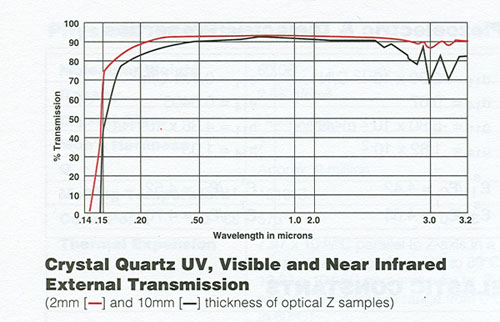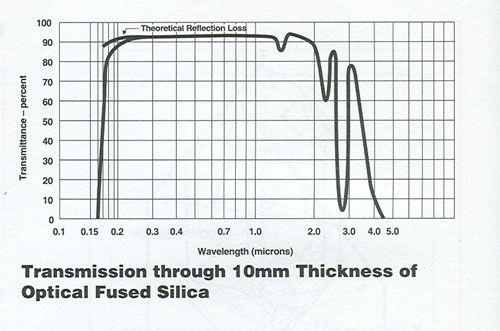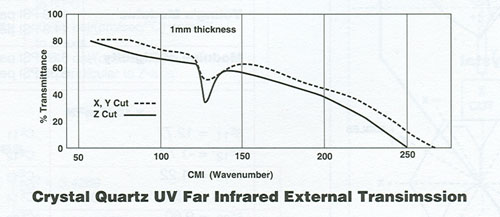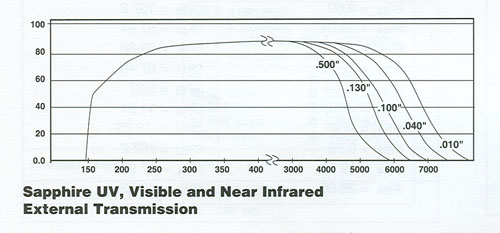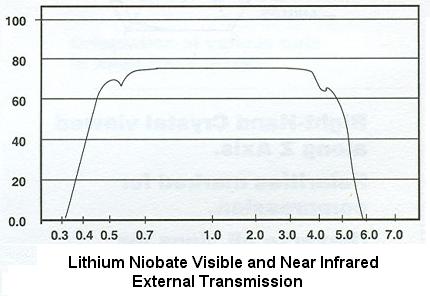An Overview of Optical Components
For over 20 years, Boston Piezo-Optics specialists have been selecting appropriate quality and cuts of crystal quartz and sapphire for a wide variety of applications. In addition, BPO has gained a great deal of experience working with and fabricating products from a wide variety of other optical materials.
Our optical fabrication expertise includes critical visual inspection, x-ray orientation of one or more planes, chemical as well as mechanical polishing, and sizing to even the toughest specifications. Our unique pin-lapping equipment and expertise allow us to provide optical components to the most demanding flatness and surface finish requirements.
Fabrication and dicing capabilities allow prototype to high volume production quantities to be economically manufactured.
Sapphire & Quartz Products
Very few materials match the useful wide transmission range and physical properties of sapphire and crystal quartz, materials which are both reproducible and affordable. We manufacture optical quality quartz and sapphire windows, flats, substrates, and prisms. We have the capabilities and expertise required to take advantage of the optical and physical properties of these materials that include birefringence, optical rotary power, extended spectral range, hardness and chemical inertness.
Orientation & Birefringence
Crystal orientation is a critical parameter when used in optical applications and Boston Piezo-Optics has the expertise to very accurately measure any single-crystal material.
This ability to perform crystal orientation combined with high precision polishing and pin-lapping capabilities and ability to control and measure uniformity and thickness allows Boston Piezo-Optics to manufacture products including birefringent filters, polarizers and polarization rotators, and retardation plates or waveplates.
Birefringent materials will divide an entering beam of light into two beams having opposite polarization. The beams will propagate in different directions and have different propagation speeds called the ordinary and extraordinary rays. The extraordinary ray violates Snell's Law and the Law of Reflection and is not confined to the plane of incidence, and its velocity changes with direction. The index of refraction for the ordinary ray, however, is constant and dependent upon direction. In an optical (001) cut, the difference between the ordinary and the extraordinary ray is a minimum. 90° X or Y cuts can be used as retardation plates or waveplates which convert polarization from linear to circular or elliptical. In an optical polarization rotator, the state of polarization is dependent upon the thickness and wavelength. Boston Piezo-Optics' chemical polishing expertise allows for the fabrication of very thin and therefore very low order waveplates.
Sapphire Products
Sapphire offers excellent physical characteristics and can withstand high temperatures and most chemicals, and transmits light from the UV to IR. Boston Piezo-Optics produces sapphire windows, flats, substrates, and prisms with parallelism down to 1.0 arc second.
Wave Plates
Very low order waveplates are generally between 75 and 125 µm thick, and are much less sensitive to temperature changes, wavelength changes, and acceptance angles than thicker regular multiple order waveplates.
Birefringent Filters, Polarizers
Our crystal orientation expertise combined with precision fabrication capabilities allows Boston Piezo-Optics to offer a wide variety of birefringement filters, polarizers, and polarization rotators.
Other Optical Components
Boston Piezo-Optics can fabricate precision optics from other materials including barium fluoride, germanium, lithium niobate, magnesium oxide, rutile, silicon, strontium titanate, zinc selenide and fused silica.
Transmission Curves
